- Forum
- General Discussion | Introductions | Off Topic Forum
- Photography General Discussion
- Downsides to converting garage into studio?
Downsides to converting garage into studio?
-
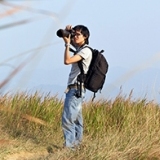 Topic Author
Topic Author
- MM Images
- Snapobsessed
-
- Nikon D610
- Followers: 115
- Posts: 267
-
Points:
3159
Post #749853
Those of you that have done this, any negative to share about converting your garage to a studio and having clients at your home?
-
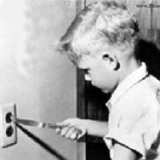
- TCav
- The Lounger
-
- Nikon D7200. Sony A77 II. Pentax KP.
- Followers: 86
- Posts: 1075
-
Points:
32974
Post #749855
Confiscate all your garage door openers. You don't want a garage door opening during a shoot because your teenager hit the button.
-
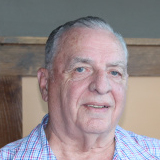
- CharleyL
- Photography Hooked
-
- Canon 90D, (2) Canon 77D, Fuji HS20 EXR, Still have my Sony MVC-FD95
- Followers: 73
- Posts: 947
-
Points:
37175
Post #749885
These all need to be considered when deciding if a space will be adequate for a photo studio. Mine is in a 2nd floor former 2nd master bedroom suite. Ceiling height in the shooting room (former master bedroom) is my biggest problem/constraint. The room is 18 X 26' and tight, but adequate, except for the 8' ceiling height, which works, but not well.
Charley
-
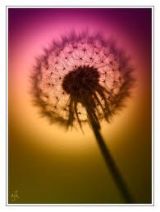
- Rawley Photos
- Photography Hooked
-
- D800
- Followers: 115
- Posts: 605
-
Points:
4832
Post #749912
TCav wrote: Unless your garage has its own entrance (besides the obvious garage doors), you'll have customers traipsing through your home to get to your studio.
Confiscate all your garage door openers. You don't want a garage door opening during a shoot because your teenager hit the button.
-
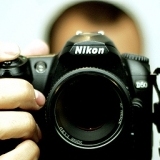
- KENT MELTON
- The Lounger
-
- Nikon D610 and Sony a7
- Followers: 209
- Posts: 1040
-
Points:
13028
Post #749983
-

- CharleyL
- Photography Hooked
-
- Canon 90D, (2) Canon 77D, Fuji HS20 EXR, Still have my Sony MVC-FD95
- Followers: 73
- Posts: 947
-
Points:
37175
Post #750045
You also need to consider things like keeping the work area separate from your private areas, separate business entrance, parking for your customers, etc. It's usually better to keep your business completely separate and at another location for this reason. Then there is no question about what is and isn't covered.
Charley
-
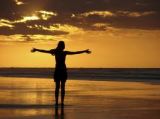
- Office Guy
- Snapobsessed
-
- Nikon D800
- Followers: 87
- Posts: 382
-
Points:
2934
Post #750076
-

- CharleyL
- Photography Hooked
-
- Canon 90D, (2) Canon 77D, Fuji HS20 EXR, Still have my Sony MVC-FD95
- Followers: 73
- Posts: 947
-
Points:
37175
Post #750194
Before building my studio I usually used my living room with a portable backdrop and a few things pushed out of the way. Everything was folded and stored in a closet when not in use. I "made do" in a one car garage a few times at my previous home, but mostly used the living room. In the garage, the workbench was behind the camera, so not in the shots. Items like shovels and rakes were on the side walls and didn't show in the shots either, so were left there during the shoot. Behind the backdrop were food containers for the animals and they didn't show either. There was no ceiling at all, except for the roof rafters way up there. Many years ago, when working as the "Stage Manager" for a theater, I closed all of the curtains and used the theater stage for my temporary studio a few times. This was the largest photo studio that I ever had by far, but none of these were ideal. They all worked, and I was quite pleased with the results. But still, none of these were single use, so all of the photo gear had to be collapsed and stored between uses, and time was spent to unpack and set up everything for each shoot. This alone is the biggest benefit of having your own single purpose photo studio.
Space enough for the camera's field of view and a background cloth to hide everything behind the subject from the camera view, is the most important thing for a temporary photo studio. Folding light stands and backgrounds let you collapse everything small enough to hide it all in the back of a closet until needed again.
Ceiling height will likely be your next problem. 8' ceilings can be a bit limiting for shooting 6' + standing subjects, but it works fine if they are seated, on the floor, or on stools or chairs. For close-up head shots, you won't likely have problems, even if the subject is standing. For full length shots, it becomes difficult to keep the top of the background out of the shot. My most frequent re-touch of my photos is the removal of the partial view of my backdrop roller system from the top edge of my studio shots.
For lighting, you will do fine with the 8' ceiling height for most all of your shots. I painted my studio ceiling and walls "Ceiling White", so I can reflect light off of them when I can't place my lighting as far from my subjects as I sometimes want to. Sometimes I wish I had a 10' or better yet a 12' studio ceiling, to allow getting a soft box "just a little bit higher", but I've been doing fine in an 8' high studio. It just sometimes takes a little more creativity, when setting up my lighting for certain shots, but it's been working for me. Maybe it would be easier to have a 10 or 12' ceiling, but it's forcing me to be a little more creative with the lighting, and I'm enjoying that.
Make do with what you have. Of course, bigger is better, but look through your camera, with the lenses that you have, while holding the camera at possible shooting positions in each possible room that you might be able to use as a temporary studio, and figure out just how much of the opposite side of the room that you can get into your shots. Don't worry about the tools or lawn tractor, or TV set for now. Just look at how much of the opposite wall shows in the view. Now, without moving the camera, look at what else is in the camera's field of view. Can these be easily moved out of the way when you want to do a photo shoot? Most portrait shoots can be done in a circle that is 10' in diameter with the subject in or near the middle of it and the backdrop at the back side of this 10' circle, and with the camera at the front side of this 10' diameter circle. Occasionally, a light or two will be on a stand located just outside this circle, but the camera, subject, and center of the backdrop will all be within this circle. Can you figure a way to get this much space, or close to it, in the approximate center of this possible temporary studio? If you can, you have taken the first step in building your own temporary collapsible photo studio. Of course, bigger is always better, slightly smaller may still work. You can do this with just a little effort. An ironed relatively wrinkle free bed sheet hanging from the ceiling can be a temporary backdrop and a couple of Speedlites and stands, plus your camera are all you really need to get started.
A couple of those reflector lights with the spring clamps from the hardware store with 100 watt 5600 K LED bulbs will work as starters if you don't have speedlites. Add a stool in the middle for your subject to sit on, and you have a beginner studio. Now, try it out and begin working on improving what needs it from there. If you want your own studio as much as I did 65 years ago, you will do this and make it work. Then add better lights, backdrops, etc. from there as time and budget permit. If you have problems or questions, I am here daily. Just ask and I will do what I can to help. I raised 4 kids, so my studio was like this for many years before I managed to have a real one. It can be done. Irene Rudnyk is on Youtube and does some great photography using her living room as a studio. She even used her backyard garden shed to do a photo shoot of her sister. Look up her channel and watch a few of her shoots. Her camera is by far the most expensive part of what she is using, and you all already have a camera.
Charley
-
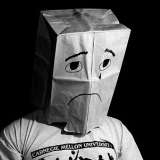
- Colorado Mike
- Photography Hooked
-
- Canon R6
- Followers: 350
- Posts: 990
-
Points:
10551
Post #750216
CharleyL wrote: Your standard homeowner' policy will only cover you, your equipment, and your guests, if you don't charge for your photography when done in any part of your home, like shooting photos of your family and frequent friends without expecting a payment for your work, because it's considered as a hobby. As soon as you charge someone, your homeowner's policy will not cover it this portion of your property, your photo equipment, or the possible injury of someone there for the photo shoot. You then need business insurance.
You also need to consider things like keeping the work area separate from your private areas, separate business entrance, parking for your customers, etc. It's usually better to keep your business completely separate and at another location for this reason. Then there is no question about what is and isn't covered.
Charley
-
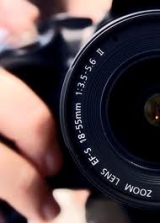
- Connie K Photos
- Snapobsessed
-
- Nikon D700
- Followers: 115
- Posts: 349
-
Points:
2377
Post #750285
CharleyL wrote: Actually, a photo studio setting can be made to quick change into an alternate use, or some other primary use can become a temporary photo studio for an hour, or a day, or two. The backdrop and the field of view of the camera lens being used are the only areas that absolutely must be clear of anything not intended to be in the photos. Anything that's off to either side or behind the camera will not be seen in the photos will not be a problem, if it does not show in the shots. You wouldn't believe what is sometimes behind or off to the sides of what you see on live TV. What the camera sees is the only important thing.
Before building my studio I usually used my living room with a portable backdrop and a few things pushed out of the way. Everything was folded and stored in a closet when not in use. I "made do" in a one car garage a few times at my previous home, but mostly used the living room. In the garage, the workbench was behind the camera, so not in the shots. Items like shovels and rakes were on the side walls and didn't show in the shots either, so were left there during the shoot. Behind the backdrop were food containers for the animals and they didn't show either. There was no ceiling at all, except for the roof rafters way up there. Many years ago, when working as the "Stage Manager" for a theater, I closed all of the curtains and used the theater stage for my temporary studio a few times. This was the largest photo studio that I ever had by far, but none of these were ideal. They all worked, and I was quite pleased with the results. But still, none of these were single use, so all of the photo gear had to be collapsed and stored between uses, and time was spent to unpack and set up everything for each shoot. This alone is the biggest benefit of having your own single purpose photo studio.
Space enough for the camera's field of view and a background cloth to hide everything behind the subject from the camera view, is the most important thing for a temporary photo studio. Folding light stands and backgrounds let you collapse everything small enough to hide it all in the back of a closet until needed again.
Ceiling height will likely be your next problem. 8' ceilings can be a bit limiting for shooting 6' + standing subjects, but it works fine if they are seated, on the floor, or on stools or chairs. For close-up head shots, you won't likely have problems, even if the subject is standing. For full length shots, it becomes difficult to keep the top of the background out of the shot. My most frequent re-touch of my photos is the removal of the partial view of my backdrop roller system from the top edge of my studio shots.
For lighting, you will do fine with the 8' ceiling height for most all of your shots. I painted my studio ceiling and walls "Ceiling White", so I can reflect light off of them when I can't place my lighting as far from my subjects as I sometimes want to. Sometimes I wish I had a 10' or better yet a 12' studio ceiling, to allow getting a soft box "just a little bit higher", but I've been doing fine in an 8' high studio. It just sometimes takes a little more creativity, when setting up my lighting for certain shots, but it's been working for me. Maybe it would be easier to have a 10 or 12' ceiling, but it's forcing me to be a little more creative with the lighting, and I'm enjoying that.
Make do with what you have. Of course, bigger is better, but look through your camera, with the lenses that you have, while holding the camera at possible shooting positions in each possible room that you might be able to use as a temporary studio, and figure out just how much of the opposite side of the room that you can get into your shots. Don't worry about the tools or lawn tractor, or TV set for now. Just look at how much of the opposite wall shows in the view. Now, without moving the camera, look at what else is in the camera's field of view. Can these be easily moved out of the way when you want to do a photo shoot? Most portrait shoots can be done in a circle that is 10' in diameter with the subject in or near the middle of it and the backdrop at the back side of this 10' circle, and with the camera at the front side of this 10' diameter circle. Occasionally, a light or two will be on a stand located just outside this circle, but the camera, subject, and center of the backdrop will all be within this circle. Can you figure a way to get this much space, or close to it, in the approximate center of this possible temporary studio? If you can, you have taken the first step in building your own temporary collapsible photo studio. Of course, bigger is always better, slightly smaller may still work. You can do this with just a little effort. An ironed relatively wrinkle free bed sheet hanging from the ceiling can be a temporary backdrop and a couple of Speedlites and stands, plus your camera are all you really need to get started.
A couple of those reflector lights with the spring clamps from the hardware store with 100 watt 5600 K LED bulbs will work as starters if you don't have speedlites. Add a stool in the middle for your subject to sit on, and you have a beginner studio. Now, try it out and begin working on improving what needs it from there. If you want your own studio as much as I did 65 years ago, you will do this and make it work. Then add better lights, backdrops, etc. from there as time and budget permit. If you have problems or questions, I am here daily. Just ask and I will do what I can to help. I raised 4 kids, so my studio was like this for many years before I managed to have a real one. It can be done. Irene Rudnyk is on Youtube and does some great photography using her living room as a studio. She even used her backyard garden shed to do a photo shoot of her sister. Look up her channel and watch a few of her shoots. Her camera is by far the most expensive part of what she is using, and you all already have a camera.
Charley
Boom! What more needs to be said?! Excellent post!
- Forum
- General Discussion | Introductions | Off Topic Forum
- Photography General Discussion
- Downsides to converting garage into studio?
Latest Reviews
The Sigma DP2 Quattro is a rare breed. It’s a large-sensor point-and-shoot camera with a 29MP sensor and a 30mm f/2.8 fixed lens. The question is, who is this camera for? Let’s find out!
I’ve been testing the Vanguard VEO 5 264CB-160S for several weeks now, and I have to say that my first impressions are nothing but good. Vanguard has knocked it out of the park yet again!
The Fujifilm X-H2s is Fuji’s flagship hybrid APS-C mirrorless camera. It launched in the summer of 2022 and has been impressing photographers and videographers alike ever since!
The Sony a9 III is a powerhouse professional-grade camera. The question is, should it be the next item in your camera bag? Find out if it’s worth the money in this comprehensive review!
Forum Top Posters
-
1Hassner 5 posts
-
2Razky 5 posts
-
3Roman Omell 3 posts
-
4Crammer 3 posts
-
5I shoot RAW 2 posts
-
6MYoung 2 posts
-
7great.crea... 2 posts
-
8Ben Vanderbilt 2 posts
-
9Scotty 2 posts
-
10M Moore 2 posts
Latest Articles
The Canon EOS R1 was finally released last week, and the question is - does it live up to the hype? Let’s dive in and explore firsthand what this camera does and doesn’t offer.
Improving your photography skills takes time, effort, and dedication. But with these unique exercises, you can make the process of becoming a better photographer more fun, too!
Night street photography is a fun pursuit with opportunities to develop your skills with portraiture, light trails, and architectural photography skills - and your nighttime photography skills, too!
The Canon EOS R5 Mark II has been unveiled, but it has a hefty price tag. If it’s out of your budget, the original Canon EOS R5 is a fantastic option. Learn more about it in this guide!
The Sigma DP2 Quattro is a rare breed. It’s a large-sensor point-and-shoot camera with a 29MP sensor and a 30mm f/2.8 fixed lens. The question is, who is this camera for? Let’s find out!
You need to try unique newborn photography ideas from time to time to keep your inspiration levels up. With the ideas in this guide, you can do just that!
What is the best landscape lens for photography - a prime or a zoom? The answer is a little murky, as it depends on the specific situation. Learn more about these lenses in this detailed guide!
Lightning photography is a tricky beast, but with the right tips, tricks, and tools, you can make the most of the next storm that rolls through. Learn some essential techniques in this guide!















